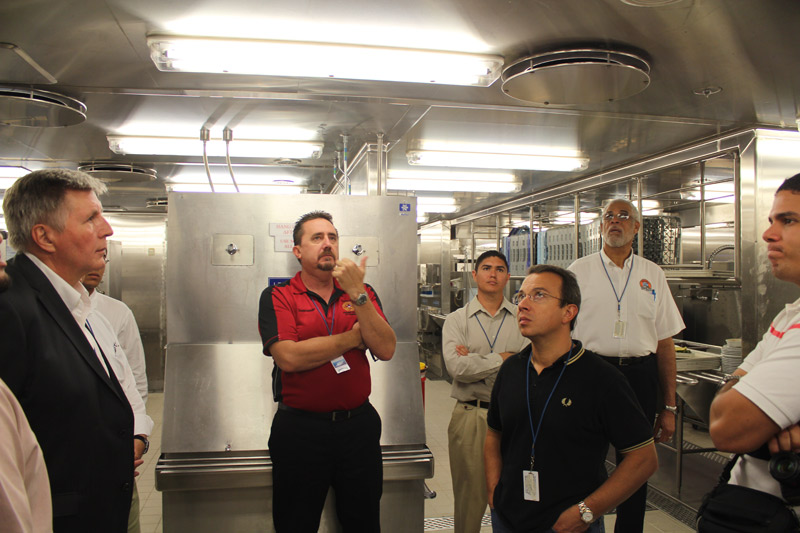 The key to a cruise ship inspection is using a holistic approach, according to the United States Coast Guard during a recent training course for Coast Guard personnel and industry representatives from the class societies and cruise lines. The course spanned an entire week, and included ship visits, giving Cruise Industry News an exclusive behind-the-scenes look with the Coast Guard’s Cruise Ship National Center of Expertise.
The key to a cruise ship inspection is using a holistic approach, according to the United States Coast Guard during a recent training course for Coast Guard personnel and industry representatives from the class societies and cruise lines. The course spanned an entire week, and included ship visits, giving Cruise Industry News an exclusive behind-the-scenes look with the Coast Guard’s Cruise Ship National Center of Expertise.
The real content came in a conference room, where Coast Guard personnel were paired in teams with class societies and cruise lines, giving them all a chance to hash out specific issues and bring very different viewpoints to the table.
One case study that spanned most of the week involved a ship with various issues, and the teams discussed and debated how to tackle them, ranging from detention to having them fixed prior to departure.
The Coast Guard presenters, all from the Cruise Ship National Center of Expertise, would embarrass most instructors anywhere, and went through photos of passenger ship deficiencies, case studies, and common issues with class societies.
As the group worked its way through Royal Caribbean International’s Liberty of the Seas it became evident that a full-on ship inspection is incredibly more complicated than most people are aware of. Coast Guard leaders worked with the group well, rotating a flashlight among participants who were supposed to point out aspects of rooms and explain further.
For example, inspectors started the exercise by going to the top of the ship and opening a store room on Deck 12 aft, and then drilled the group with questions on room category, fire suppression rules and more. More so, the entrance to that storage was under an overhang that was less than 10 meters long, meaning that no fire suppression was required.
Moments later the group headed to a galley for one of the ship’s many alternative dining venues. The first things to check in a galley? Fire protection and suppression, and escape routes. In this case, escape routes were properly marked, but a refrigerator did conceal one exit sign.
On the bridge, the ship’s officers reviewed the fire control plan with participants, and also went over detailed maps of each deck on the 154,407-ton Liberty of the Seas.
Backstage, the theater was described as “uniquely challenging” for ship inspections, with props taking up space, in addition to no shortage of flammable materials.
Walking through the ship with the Second Officer, fire walls were randomly tested, including a massive closing in the boardwalk area.
On deck, Coast Guard inspectors can request the ship to test its lifeboats, out of water, where they should be able to run for up to three minutes. Tenders aren’t excluded from that rule either, despite the complaining of Chief Engineers, since they do function as lifeboats.
Steps from the lifeboats was a hose and hydrant apparatus, where again more specific rules come into play. Outside, hoses do not need to be hooked up (but instead kept by a hydrant), while inside, they must be attached.
Excerpt from Cruise Industry News Quarterly Magazine: Summer 2012



